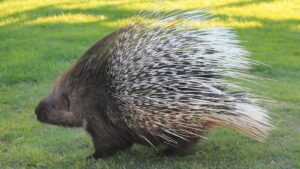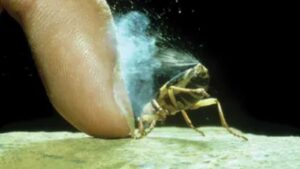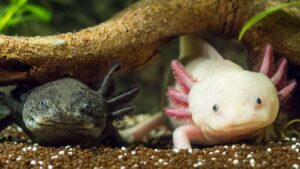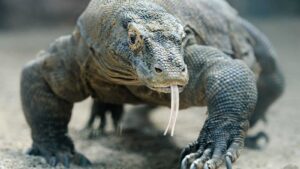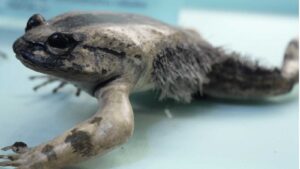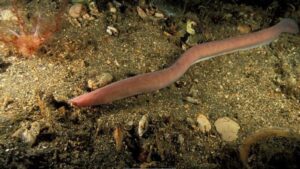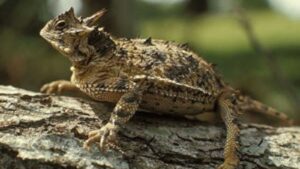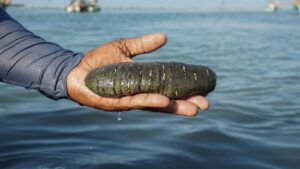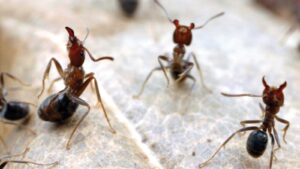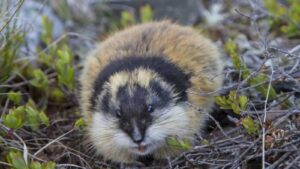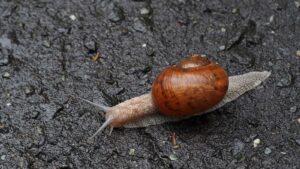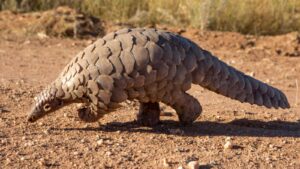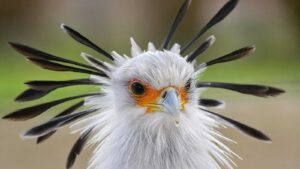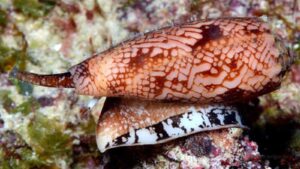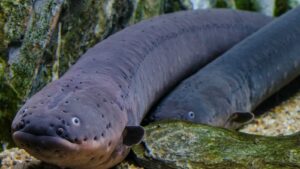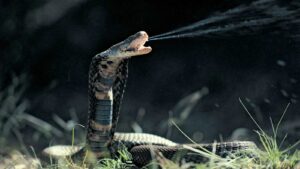Fatal ways animals protect themselves
Summary
Top 20 fatal ways animals protect themselves. These living creatures may seem clumsy and even small to you, but it is better not to cross their path because each of them has its own secret weapon. Some of these animals […]

Top 20 fatal ways animals protect themselves. These living creatures may seem clumsy and even small to you, but it is better not to cross their path because each of them has its own secret weapon.
Some of these animals look almost helpless in the face of predators. However, evolution has taken care to reward some animals with unique abilities, giving them the power to reckon with. Take a look at this list of the top 20 fatal ways animals protect themselves.
Video: Fatal ways animals protect themselves
Porcupine
Porcupines are medium-sized animals with short, silly faces. Their bodies are covered with hard needles, which reach a length of 30–40 cm. Most of them are so hard and sharp that hunters of some tribes in Africa use them as arrows. Porcupines also use their needles as weapons. When the beast feels threatened, it tramps on the ground, grits its teeth, and shakes its needles, making an intense noise. Thanks to the sharp movements of his body, he throws his needles in different directions; they sink deep into trees and can cause severe wounds to his attacker.
Video: Fatal ways animals protect themselves
Bombardier beetle
The African bomber beetle is defending itself by “shooting” its opponents. Iron at the back of his abdomen produces self-heating chemicals. The odd mechanism of this beetle is one of the strangest ways animals protect themselves. The bug can “shoot” an explosive mixture in all directions. The beetle’s abdomen is reduced by up to 70 times when liquid is released!
Axolotl
The axolotl is a close relative of Salamandre, which is found mainly in Mexican coastal waters. The coloring and mysterious “smile” have made axolotl a fashionable exotic pet.
Many people would like to caress their animals, but in this case, the result will frighten them. To escape from the threat, the axolotl allows the predator to grab a non-vital part of the body, such as a limb, immediately throw it away, and swim away. The body part continues to twitch like a living part for some time to attract the attention of the persecutor. After throwing away the body parts, the axolotls are perfectly regenerated.
Ascidia
Possums, snakes, and some fish pretend to be dead when they’re attacked. Releasing internal organs is another weirdest way animals protect themselves. Ascidia has gone further: it scares the enemy with “suicide.” When attacked or threatened, she throws away her stomach and guts. After that, her torso shrinks, and she looks just like she’s dead. But about five days after this action, she grows all her internal organs back and lives on.
Komodo Varan
The Komodo varan, whose length reaches 3 m and weighs up to 70 kg, is considered a “modern dinosaur.” More than 60 teeth of the Varana guarantee that its bite is extremely dangerous. Still, it’s not just the number and sharpness of teeth; in the particles of rotting meat that get stuck between them, live pathogenic bacteria. That’s why the varan’s mouth is teeming with infections. Often, once the varan bites, it just waits for the painful death of the prey.
Hairy frog
As a rule, when the name of an animal contains the words “fear” and “horror,” it does not bode well. A hairy frog that is called a “horor frog” is no exception. Usually, frogs are defenseless, but this frog breaks the bones of its fingers to make the broken bones look out of the phalanges like claws, and it hurts predators! In Africa, such frogs are hunted with spears, machetes, and even guns.
Myxine
Not surprised yet? Some animals defend themselves with even more creative methods. Myxines can live for months without food on the seafloor. To eat, they just have to soak food through their skin with water. And when they are going to be eaten, myxines throw out the cloud of mucus right in the pursuer’s eyes, which envelops the enemy and gives them a chance to literally slip away.
Texas horned lizard
Who could be stupid enough to try to eat this spiky, unfriendly creature? However, hawks, snakes, dogs, wolves, and coyotes still try. To defend itself against them, the lizard defends itself in a very peculiar way: at a dangerous moment, it shoots a jet of blood from the eye for a reasonably long distance.
Read More: People with extra body parts
Sea cucumber
Some animal defenses are more than just odd. Sea cucumbers don’t just shoot the insides at the enemy. When it doesn’t work, they just dissolve entirely. Gradually the shape of their body begins to blur, and they, like a ghost, disappear before your eyes and safely sail away in this state. This skill is dangerous because sometimes they can “overdo” a little bit and die.
Tree Ants
The mechanism of protection of Camponotus, or ant tree, made it world-famous. Have you ever seen an ant explode? Or an entire colony of ants?
When a tree ant is attacked, it doesn’t just bite the enemy. The ants pile upon him, crawl to his head, reach the target, grab the enemy’s jaws, and literally explode. This explosion is accompanied by the release of an irritating and sticky substance. The predator is blinded, and the ants biting his jaws are glued to his face. It’s a success!
Norwegian lemming
These little rodents look like chubby, cute babies.
The myth about these lemmings is that they supposedly commit mass suicide by throwing themselves off a cliff. It’s fiction. The reality is that a Norwegian lemming has the strongest survival instinct, which makes it dangerous for enemies.
When confronted with a predator that exceeds its size, lemmings do not run away but enter into battle, making deafening sounds, attacking the enemy, and biting his sharp teeth.
There are many videos on the internet where Norwegian lemmings bravely fight cats, wild birds, and even big dogs like bullmastiff.
Karaftohelix Gainesi
Fighting snails, Karaftohelix Gainesi from the Japanese island of Hokkaido, use their shells not as a shelter but as weapons. They are able to turn their shells 180 degrees in less than a second and, waving them, can chase away the attacking beetle.
When speaking about how these animals protect themselves, Utah Moriah said that the shell of these snails is much larger than that of those who just hide in danger: “Such a large weapon has contributed to the development of muscles enough to wave it.”
Slow Lori
Their huge round eyes, pretty faces, and legs like human hands have made small Lori favorites.
However, when feeling the danger, Lori often raises his paws above his head. And it’s not a sign that he’s giving up; it’s a defensive posture in which he brings the iron that’s at his elbow closer to his mouth.
The liquid emitted by this gland, mixed with saliva, turns into a potent poison that Lori lubricates his head with, making it a toxic element of the body.
Lori can also hold the poison in their mouth, preparing it in case of getting bitten.
Northern Fulmar
If you think you know about protection mechanisms in the in the weirdest ways now, you are entirely wrong.
Nestlings of the Northern Fulmar have an original way of repelling predator attacks, which decided that they were easy prey.
Like many other birds in this family, they burp at the attacker. It’s not appealing, but it’s effective.
They create in their stomachs a concentrated oily liquid and then, if necessary, spit it out at the enemy.
Besides, the liquid is deadly.
Pangolin
His name Pangolin came from his unique appearance and original way of protection from attacks. His body is covered with very strong and sharp plates. When the animal feels threatened, it instantly twists into a ball, wrapping its tail around its head and neck. It is known that soldiers armed with steel swords could not do any harm to the twisted pangolin.
Tigers and other wild cats can roll the “ball” on the ground for hours. But when they get hurt by sharp scales and tiredness, they leave the beast alone. An additional bonus is that the pangolin is capable of letting a jet of stink secret out of the assailant’s face—just like a skunk.
Secretary Bird
Tall legs, pink eyes, and black feathers, strangely protruding from the head, make it difficult to take the bird secretary seriously.
But this long-lived bird of prey living in an African savannah has a blow to his leg that Bruce Lee will envy.
According to a 2016 study, its kick has the equivalent of five units of its own weight, applied in a time span of 15 milliseconds.
These birds weigh between 3.5 and 4.2 kg, and a series of their powerful and fast kicks are enough to trample and kill a snake, lizard, or small mammal.
Leptobrachium Boringii
Some animal protection mechanisms may seem funny, like it is in this case. A mustache? A male toad from southern China? Well, yes, it’s not exactly a mustache, but rather horns where a real man should grow a mustache—on his upper lip.
10 to 16 of these horns grow out of these male creatures every spring. They are up to 5 mm long and consist of the same strong proteins as our keratin nails.
If you’re holding a toad in your hand, it may scratch you, but it won’t pierce your skin—the mustache isn’t sharp enough for that. However, they still can bruise or stab each other.
Conus Geographus
Inside this beautiful shell hides one of the most dangerous living things on Earth.
They mainly live in tropical waters of the Pacific Ocean but are also found off the coast of South Africa and even in the Mediterranean Sea.
They move slowly but are very voracious. Their prey is usually small fish, crustaceans, and other clams. In hunting, they use teeth modified for the harpoon. Inside the spear is a cavity connected to the poisonous iron. Those who survived say that the pain was barely felt.
A few microliters of their poison is enough to kill up to 10 people.
Electric eel
The electric eel is found in the tributaries of the Amazon and Orinoco, as well as in the marshlands of northeast South America. Externally, it is almost no different from ordinary eel: the same serpentine body, however, three meters long, with the rudimentary tail fin. On the other hand, unlike its freshwater brother, it can generate a powerful electric field. It extends for about 5 meters, and near the fish, the voltage is so high that it has enough to light a few hundred-watt bulbs.
Read More: Two Headed Animals You Won’t Believe Exist
Spitting Cobra
It is known that animals in nature can be very creative and dangerous when protecting themselves.
In this case, its name spitting cobras got thanks to their ability to shoot poison in the enemy’s eyes up to three meters with incredible accuracy.
However, the snake does not actually spit out the poison. The release of the “lethal cocktail” is caused by sharp contractions in the muscles. Besides, for a greater effect, a second before releasing the poison, the snake starts to rotate its head and, while moving, releases the fluid. Accordingly, the poison is most likely to hit the opponent’s face and both eyes at once. The experiment also showed that the cobra does not release the poison in the form of a jet but rather an aerosol.
Which one of these ways of protecting you frightened you the most? Tell us about other weird animals that you know of in the comment section below.
